Visit Library for MBP Pro eBooks |
This week we will start what will probably be a three-part series to walk you through my second Japan Winter Wildlife tour and workshop for 2023. The first of these two tours was very productive. I came home with around 180 images that I really liked. That’s a good crop, but for this second tour, I came home with one hundred more images than that, a whopping 280 photos that I was happy with, and, of course, that is while being very selective, and whittling down my selection a number of times.
I have done these trips many times now, and I often find it difficult to raise the bar, but some opportunities on this particular trip enabled me to do just that. As usual, we started with three days at the Snow Monkeys. The staff at the Snow Monkey park were calling me the Snow Man because they’d had very little snow throughout the season but a good snowfall shortly before my group arrived on both visits. Unfortunately, we didn’t get any falling snow with the monkeys, but there was enough snow on the ground to enable some beautiful shots.
It was also, on average, around five degrees colder than usual, which gave rise to the first shot that I wanted to share today, and this is one of those shots that I feel will remain a firm favorite over the years. When it’s cold, we tend to get more mist rising off the warm water in the pool that the Snow Monkeys bathe in. This is challenging from a photography perspective because, quite often, the mist hides the face of the monkeys, but if you are patient, there are patches of clarity that move through the mist, and you can time your shot so that just the monkey is visible through the mist. The other difficult thing, of course, is finding a monkey doing something interesting for your photo.
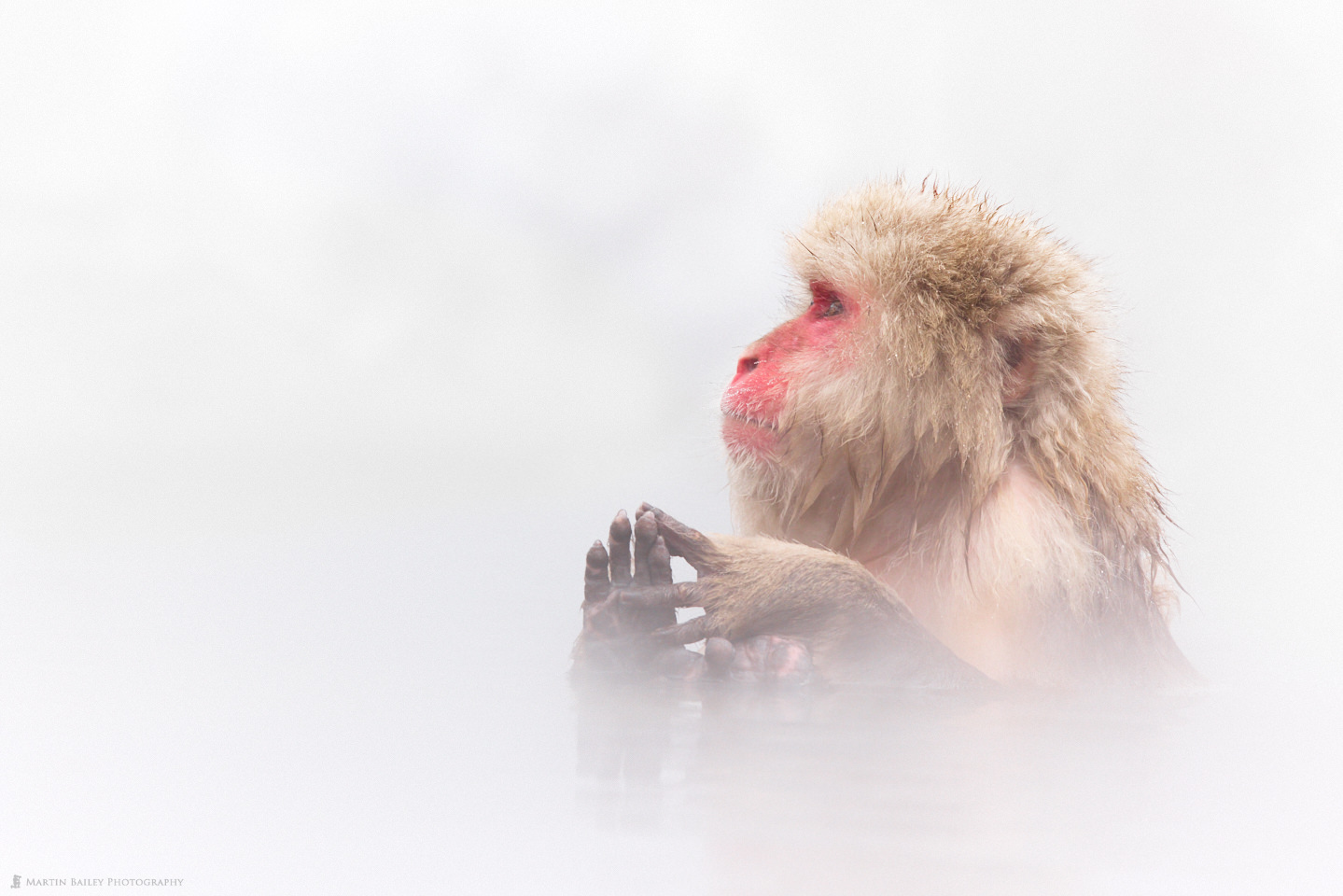
I was incredibly fortunate on this visit to find this monkey with its feet up on a small stepping stone just below the surface of the water, resting its hands on its feet while looking upwards slightly. This came together to give the monkey a contemplative gaze in what would seem to be an idyllic environment, although harsh because of the cold, which is required to form the mist. I called this image, “Does It Get Better Than This?” as a question.
I try to avoid sharing similar images, but I got a second image of this same monkey shortly after this, which I called “It Doesn’t Get Better Than This” without the question mark, as this monkey is no longer asking. It knows that it just doesn’t get better than this. The question and the answer in two photos.
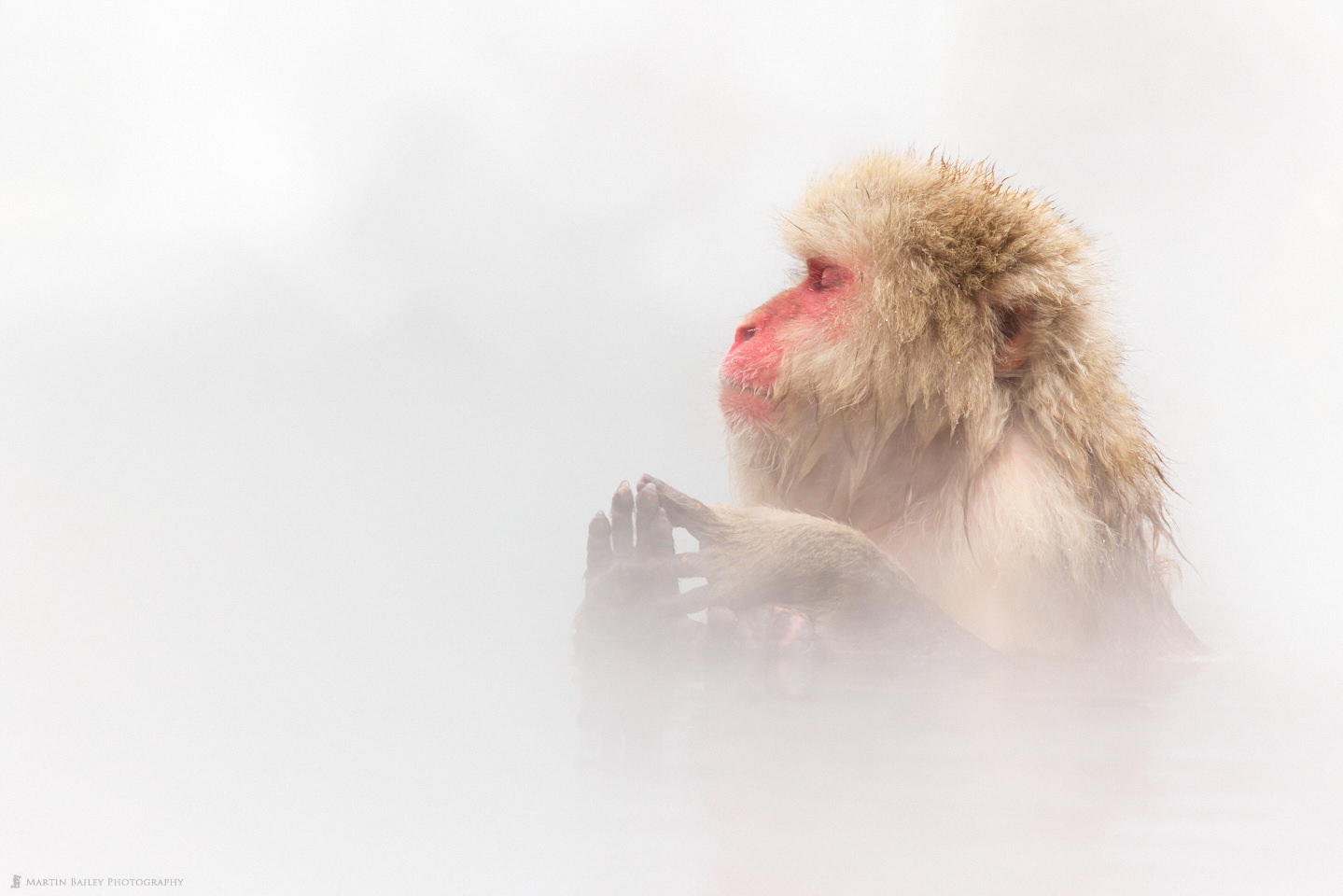
I continued to have a little fun with my image captioning, as I called this next photo “Jack Monkeyson” because I thought the maniacal smile looked a bit like Jack Nicholson in The Shining. This also shows the monkey in the relatively deep snow beside the hot spring pool.

Another opportunity that I have not seen before, was this Japanese Komoshika or Serow, a kind of antelope, was walking around in the snow on the side of the valley where the path down to the hot spring pool is. I often see these animals on the other side of the valley, and they usually so far away that they require an Extender to even really see them in the frame. On this day, I was able to shoot this Serow at 500mm and almost have him fill the frame, as you can see in this photo.
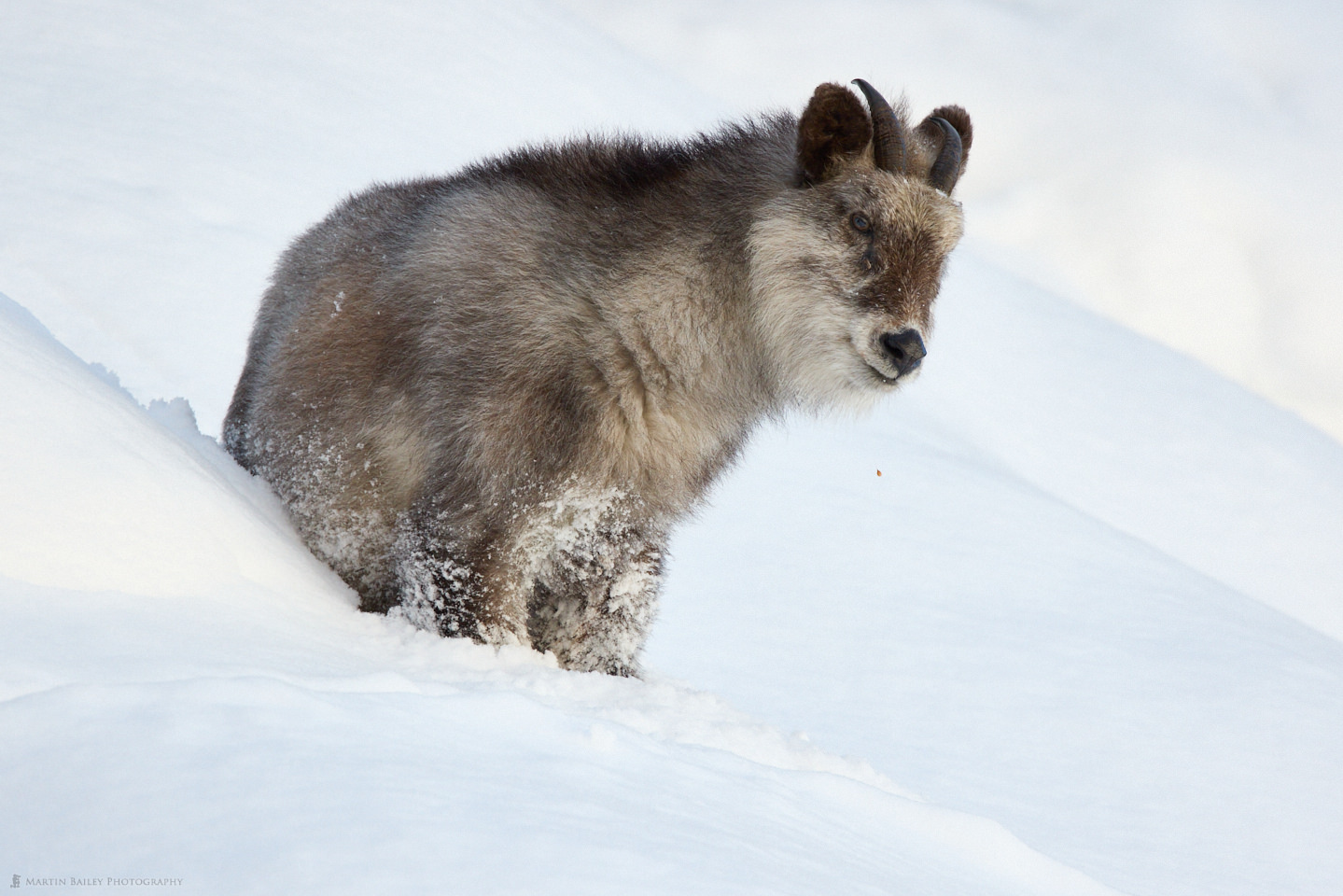
This guy got so close as he walked around that I could get a portrait, again at 500mm, but this time with only half of its body filling the frame. A somewhat strange-looking creature that I’ve often photographed but rarely shared images of because it was always so far away and in surroundings that didn’t do it justice. Being able to photograph it so close like this, or surrounded by snow, as in the previous frame, was enough to make it worth sharing these images.
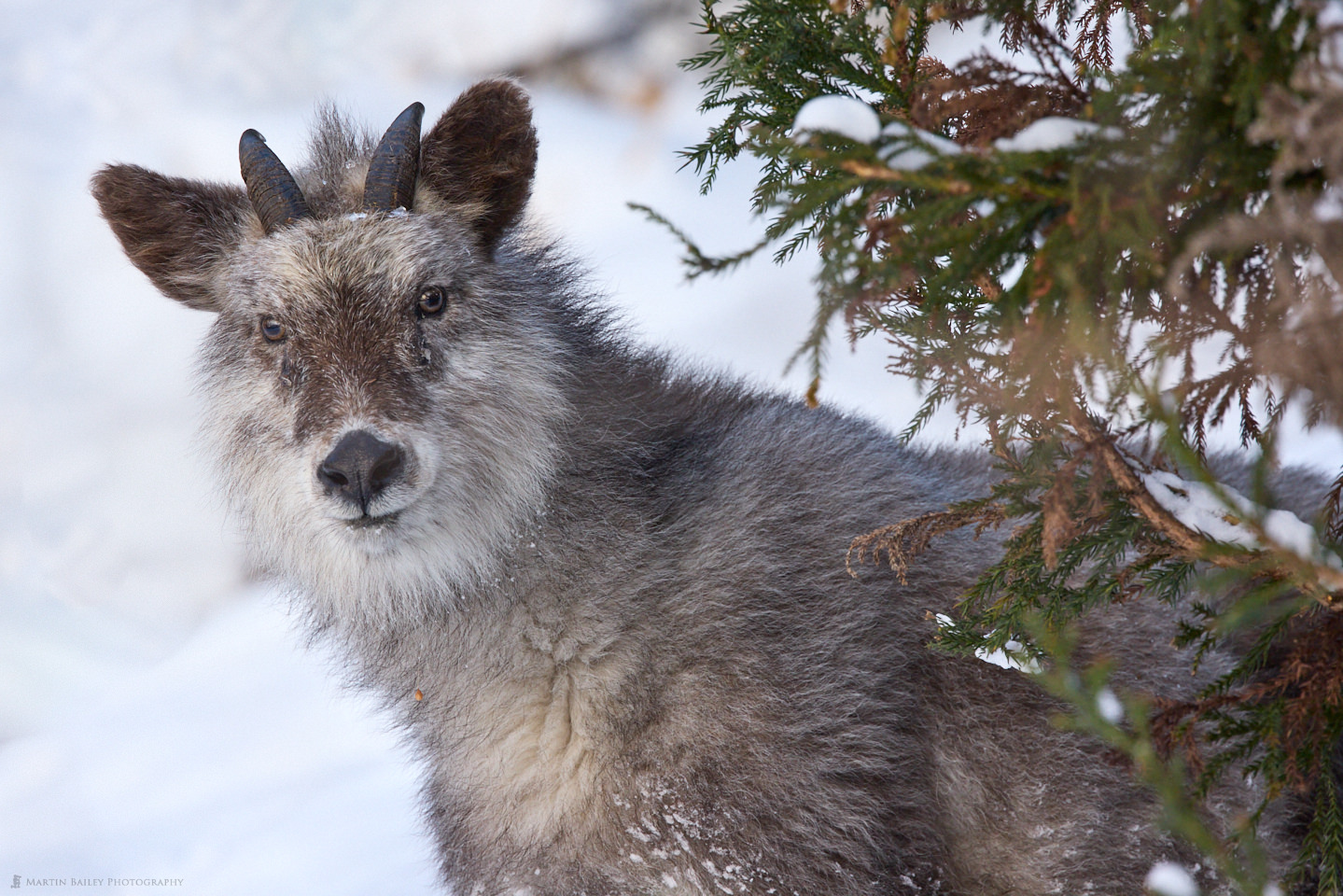
Another shot that I want to share is a bit of a cheat on my part. As we held up our cameras framing up a monkey sitting on top of a rock, I noticed it’s foot slip, which led to the monkey jumping off the rock with lots of falling snow around it, and I got two frames that contained most of the action, but I hadn’t zoomed out enough to get the entire monkey in a single frame. I cropped the foot of the monkey off in one, and the hand of the monkey in the second frame, so I stitched the two frames together, and essentially grafted the hand of the monkey onto the shot where I had its feet in the frame. This is the resulting image. It’s not great quality, but I kind of like the feel of the falling snow and pose of the monkey as it half-falls through the air.

After three days with the monkeys, we drove back to Tokyo and headed over to Hokkaido on the fourth morning of the tour. We started with two days of photographing the elegant and beautiful Japanese Red-Crowned Cranes, and as I often do, while we had one of many lulls in the action, I shot some portraits of the cranes, of which this is one of my favorites.
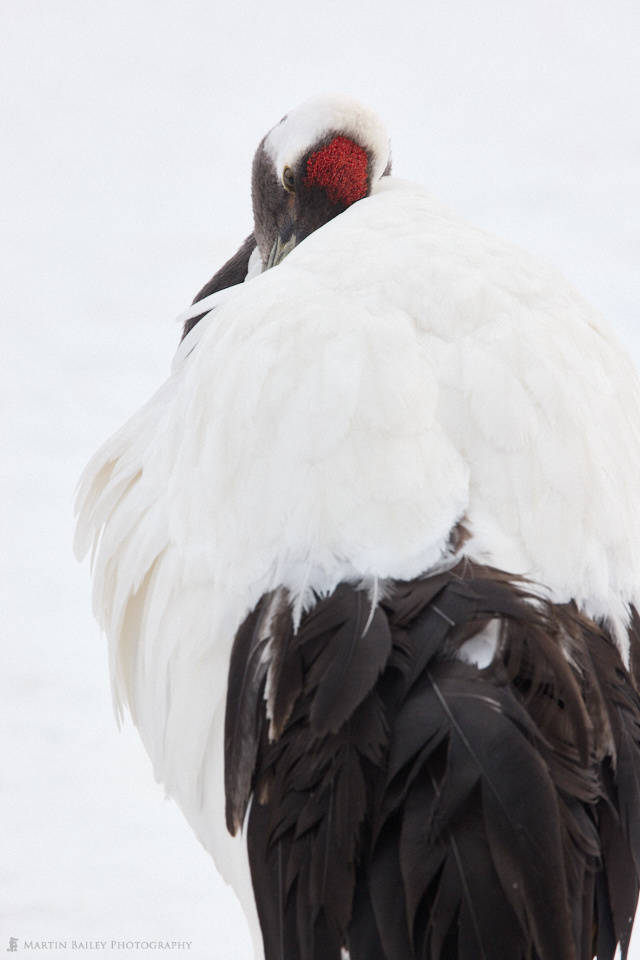
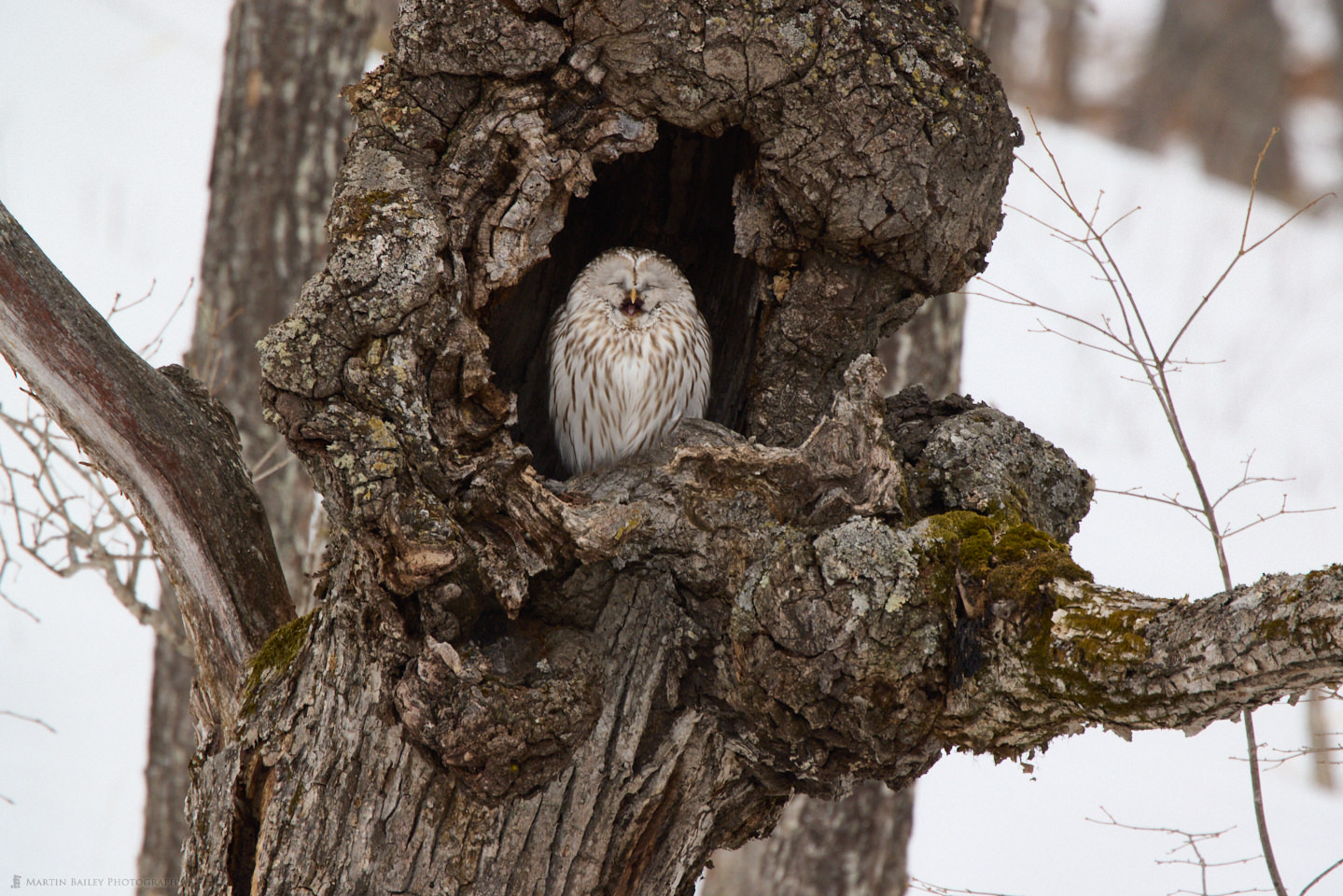
In the afternoon on the first day in Hokkaido we also visited a Ural Owl’s nest and found the owl resting. I was lucky enough to notice him yawn shortly before we left, which made a nice change. To protect the owl we shoot this guy from quite a distance, so I used my 2X Extender on the 100-500mm lens for a 1000mm focal length.
We went to a different crane location after the owl, but we’ll skip those shots for now, as we were treated with a little falling snow the following morning, so although it wasn’t cold enough for hoar frost at the bridge in Tsurui, we got some beautiful shots of the cranes in the snow shortly after breakfast. In this first shot the snow was just setting in, but I love the pose with these two cranes both arching their necks back while puffing up their wings in unison, right down to the angle of their back legs.

The snow got a little heavier as I captured these two cranes singing and strutting together, and heavier still for a landscape orientation shot of another pair singing together, although not in perfect step this time. To freeze both the snow and the motion of the birds, I used a shutter speed of 1/1250 of a second, and I stopped down my aperture to ƒ/13 to ensure that both birds were sharp. Many wildlife photographers automatically shoot with their aperture wide open, but if you do that with two large birds like this, only one of them will be in crisp focus, and I don’t like to see that.
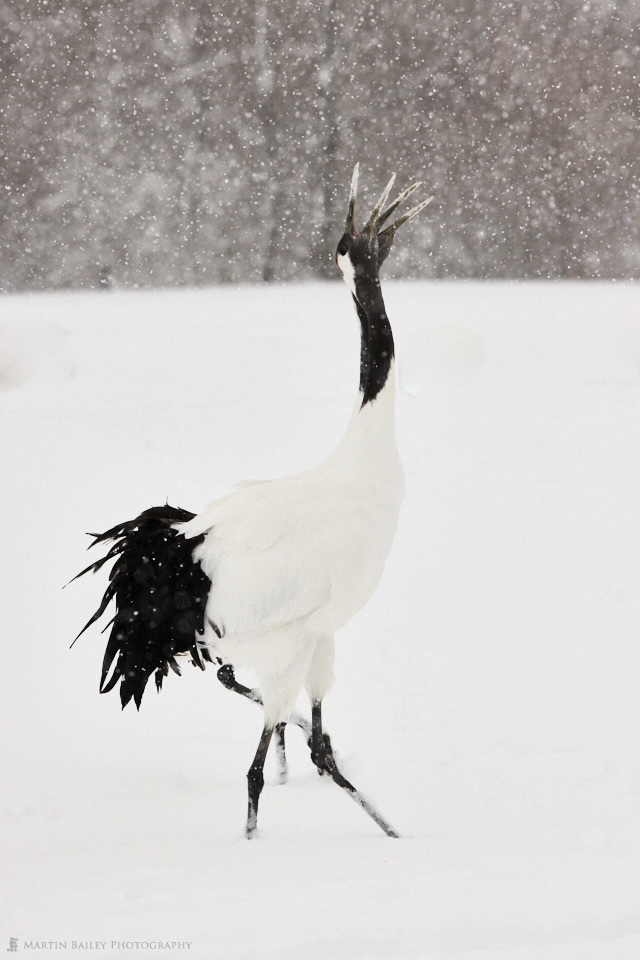
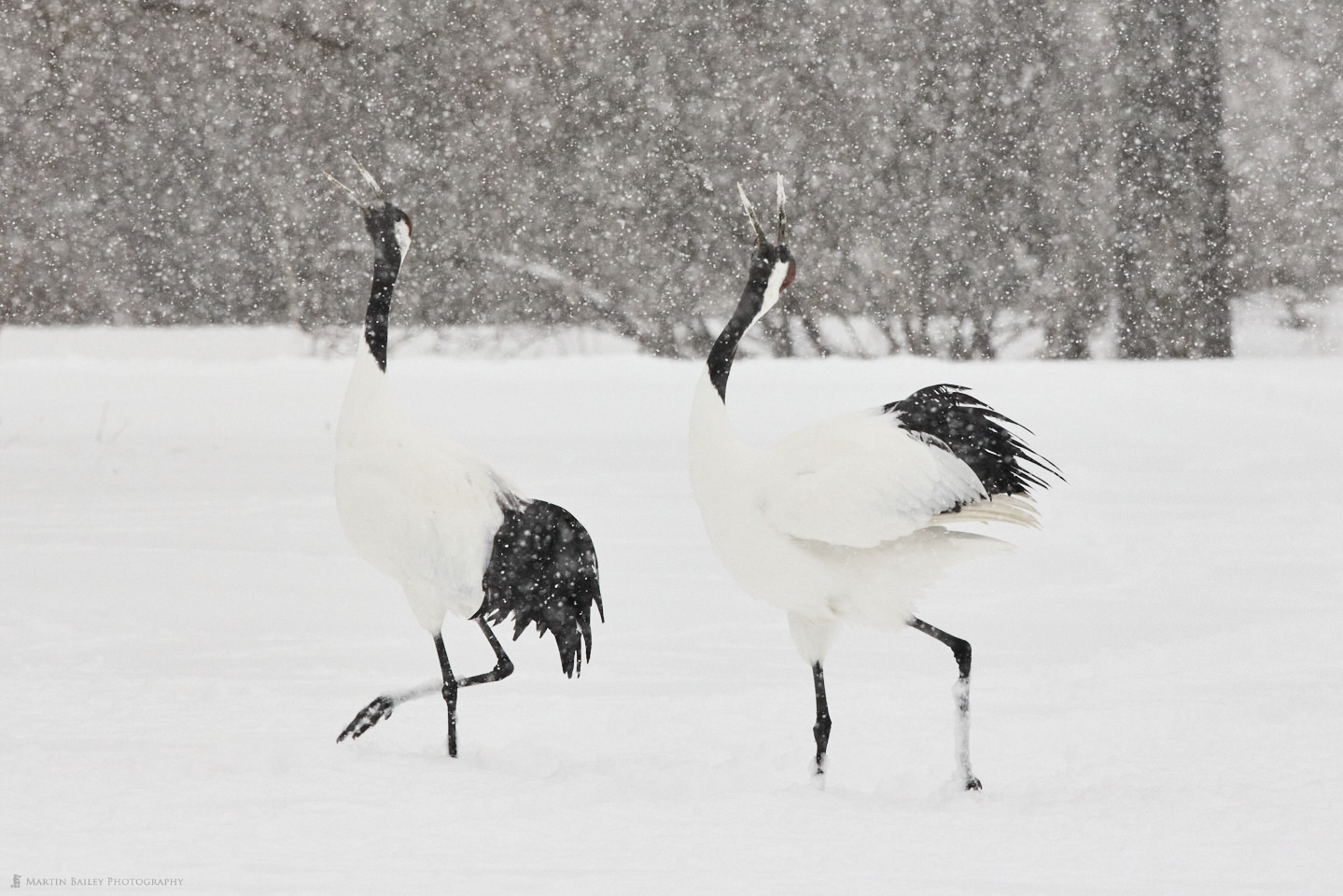
I’ve gone through these pretty quickly, so here is one last image taking us to twelve images for this first episode of the series, and here we can see the behind of one of this pair of courting cranes, showing, as I often quiz my tour guests, that the cranes’s tails are white. In most photos it looks like the Red-Crowned Cranes have black tails, but the black is actually the flight features along the back edge of their wings.
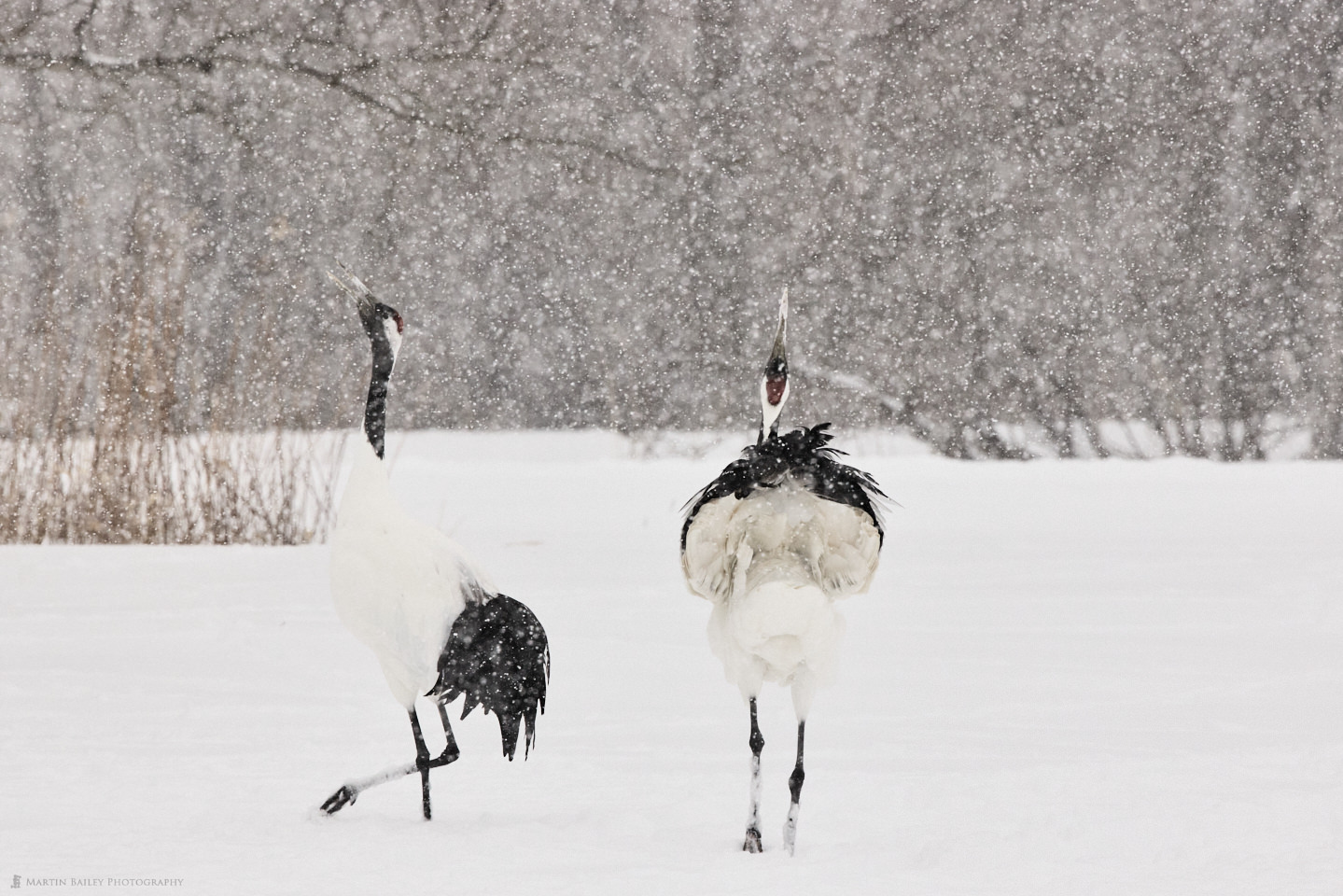
I also like how there is a bit more of a landscape behind the birds in this shot too. The regular enclosure doesn’t have this kind of feature, like the grasses and the bow of the tree to the left, and I think these add some nice context to the winter scene that these birds are so at home in.
OK, so we’ll wrap it up for part one of this series. We’ll pick up the trail next week with some more crane shots before we move on to the Whooper Swans and then on to the Sea Eagles again, both of which continued to provide some spectacular opportunities this year.
If you might like to join us in 2024 or a future trip, please check out our tours page which at a glance tells you the availability left on each tour, and you can click on the tour graphic to jump to the tour page for full details and to book your place. I hope to see you there!
Show Notes
Check out our tours here: https://mbp.ac/tours
Subscribe in iTunes to get Podcasts delivered automatically to your computer.
Download this Podcast as an MP3 with Chapters.
Visit this page for help on how to view the images in MP3 files.


0 Comments